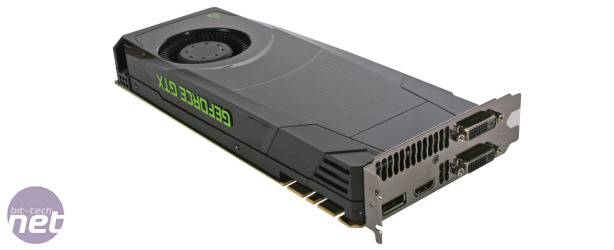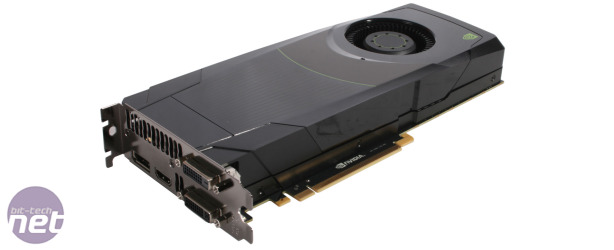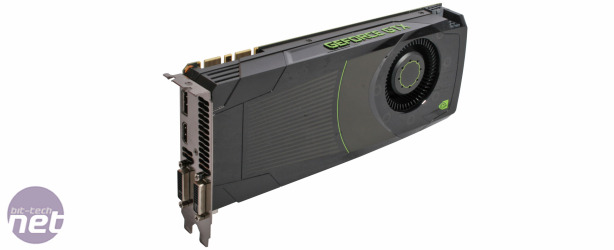
Performance Analysis
Presuming you made even a cursory glance at our benchmarks, then you’ll know (unless you only looked at ARMA 2, in which case your name is probably James Gorbold) that the GTX 680 2GB more than lives up to Nvidia’s claim as being the fastest single GPU ever.We’ll look at ARMA 2 first though, the only game of our suite where the GTX 680 2GB was unable to surpass the HD 7970 3GB. Throughout our test, the GPU’s core frequency boosted to 1,097MHz, with no variance over time. At 1,920 x 1,080 with 4x AA the GTX 680 2GB only reached a minimum frame rate of 59fps, to the HD 7870 3GB’s 66fps. Despite this, the GTX 680 2GB is still, amazingly, 13 per cent quicker than the dual GPU GTX 590 3GB, and 18 per cent faster than the GTX 580 1.5GB, but its not enough to surpass AMD.
At 2,560 x 1,600 with 4xAA the situation gets worse, as the GTX 680 2GB is pipped by AMD’s cheaper alternative, the HD 7950 3GB. However, at 5,760 x 1,080 the GTX 680 2GB atones for its performance at lower resolutions by finally bettering the HD 7970 3GB, albeit by just five per cent with a minimum frame rate of 21fps.
In all our other benchmarks though, it was a very different story, with the GTX 680 2GB imperiously demolishing the oppositions minimum frame rates. In Battlefield 3 we saw the GPU core frequency boost to 1084Mhz, resulting in a minimum frame rate of 64fps for the GTX 680 2GB at 1,920 x 1,080 with 4xAA.
This is 23 per cent higher than the HD 7970 3GB’s minimum of 52fps, and an amazing 36 per cent higher than the GTX 580 1.5GB in the same test. In fact, it’s just a few per cent off the performance of the GTX 590 3GB, a card that launched one year ago for almost £600. At 2,560 x 1,600 with 4xAA the gap between the GTX 680 2GB and the HD 7970 3GB narrows, with the GTX 680 2GB managing a minimum frame rate of 37fps to the HD 7970 3GB’s 33fps, but this still represents a 12 per cent improvement.
It’s a similar pattern in Dirt 3, where the GPU boosted 1071MHz, occasionally rising to 1,084MHz during less demanding sections of the benchmark. Here the GTX 680 2GB posted an incredible minimum frame rate of 113fps at 1,920 x 1,080 with 4xAA, a 25 per cent improvement over the HD 7970 3GB’s result of 90fps. At 2,560 x 1,600 with 4xAA this gap again narrowed, but with a minimum frame rate of 75fps the GTX 680 2GB was still 17 per cent faster than the HD 7970 3GB. Pushing the resolution even higher saw the gap close again and at 5,760 x 1,080 with 4xAA the GTX 680 2GB, while still quicker, saw its advantage over the HD 7970 3GB slip to eight per cent.
Due to the GTX 680 2GB’s R300 series driver, we were forced (again) to retest cards in Skyrim in order to provide useful results, this time retesting the rest of Nvidia’s line-up with the GeForce 296.10 WHQL driver and the AMD cards on their release drivers. While it's clear then that driver optimisations can buy a lot more extra performance in Skyrim, the GTX 680 2GB was still exceptionally quick and boosted to its maximum level of 1,110MHz throughout our test.
At 1920 x 1,080 with 4xAA the GTX 680 2GB managed to surpass the dual-GPU GTX 590 3GB with a minimum frame rate of 104fps; 30 per cent faster than the GTX 580 1.5GB. The same was true at 2,560 x 1,600 with 4xAA, where the GTX 680 2GB matched the GTX 590 3GB with what looks to be a CPU limited minimum frame rate of 83fps. Finally at 5,760 x 1,080 the GTX 680 2GB power ahead of the AMD competition, with a mighty minimum frame rate of 47fps, incredible performance for a game being played over three screens.
What’s even better is that despite this phenomenal 3D performance, the GTX 680 2GB is also surprisingly frugal when it comes to power consumption. Idle system draw was just 89W, the same as the HD 7950 3GB and a 17W decrease from the GTX 580 1.5GB. It's peak power draw that amazed us though; under load in Unigine’s Heaven Benchmark (GPU boosting to 1,110MHz), system power draw peaked at 256W, 28W fewer than a GTX 580 1.5GB and 37W fewer than the HD 7970 3GB in the same test.
With such reasonable power consumption, it’s not surprising to find that the GTX 680 2GB also runs reasonable cool as well. An idle Delta T of 11°C above ambient is excellent for a high end card, while a peak delta T of 54°C is similarly reasonable.
Throughout this, the card’s cooling fan remained very quiet and while it does spin up a little under load, it was never to an intrusive level. Do bear in mind however that we test GPUs in a very well ventilated and fan filled Antec 1200, and that your case and cooling experience may vary.
We found while overclocking that once the GPU temperature reaches 80°C the fan will spin up to keep the GPU at around that temperature, so less well ventilated cases will make for noisier cards. Even at these higher temperatures though, the GPU still boosted up to its maximum level in Unigine Heaven.

MSI MPG Velox 100R Chassis Review
October 14 2021 | 15:04











Want to comment? Please log in.